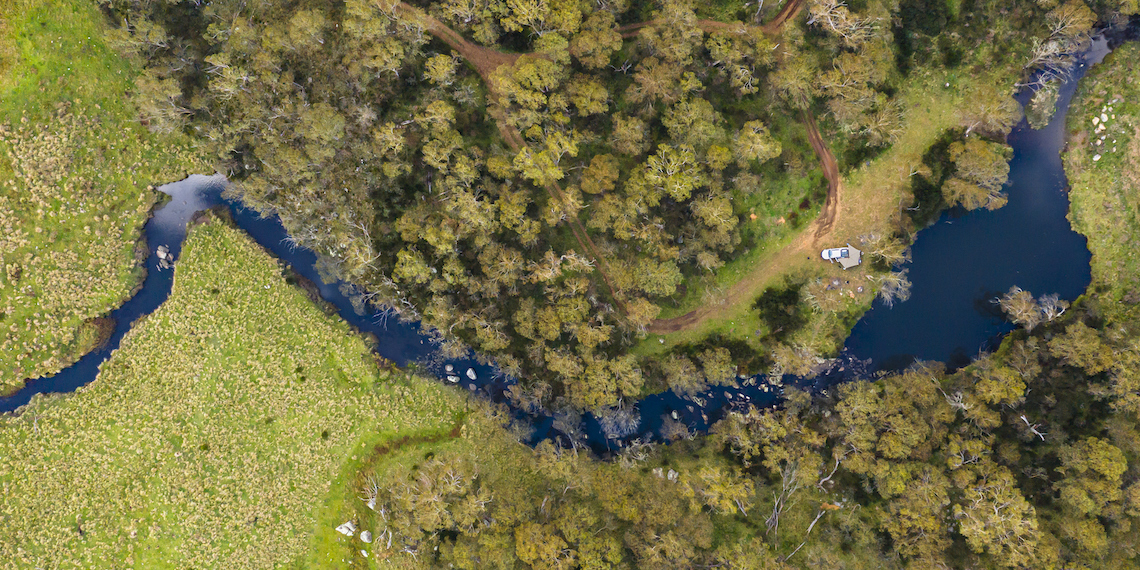Restoring water quality after a series of extreme events

For three years at the end of the last decade, the water systems of the MidCoast region of New South Wales were buffeted by extreme event after extreme event.
Intense drought between 2017 and 2019 dried up rivers and creek beds. Widespread bushfires in the final months of 2019 burned 244 thousand hectares in one of the region’s catchments.
Then 2020 began with intense downpours, raising fears that the heavy rains would wash contaminants into waterways.
“We wouldn't have seen the magnitude of this effect if these three events did not occur in sequence,” MidCoast Council Water Quality Systems Officer Dr Judy Arasanilai said.
“Once we had the drought, the soils were all parched. Then we had the bushfires, which produced all this ash, sealing most of the pores in the soil.”
Then the high-intensity rainfall eroded the soil in the catchments.
“The ability for the catchment to absorb the water was reduced because of the drought and the bushfires, and the riparian vegetation drying off,” Arasanilai said.
“So we looked at these extreme events and how they actually impacted the water quality in our drinking water catchments.”
Monitoring catchments
Set to discuss the results from these observations at Ozwater’23 in May, Arasanilai said MidCoast Council looked at three drinking water catchments in order to make operational adjustments at water treatment plants.
“But we also tried to understand how the water quality is related to the catchment characteristics, as well as the severity of the bushfires and the catchment activities,” she said.
Arasanilai’s study considered the effects on water quality following this succession of extreme events, then followed the catchments through to their recovery in late 2021.
This permitted the council to identify potential risks of poor water quality in the catchments using the ‘catchment to tap approach’ from the Australian Drinking Water Guidelines. The study also took in measurements of potential pollutants, increased nutrients and microbial loads.
“We touched on the operational adjustments we made at the water treatment plants so that we could supply safe drinking water to our customers. And on a positive note, we managed to provide safe drinking water to all of our customers without having a boil water alert,” she said.
“The Australian Drinking Water Guidelines’ catchment-to-tap approach is all about looking at the risks, finding out what risks are there, and then mitigating those risks by putting in multiple barriers and monitoring the performance of the barriers.
“We knew that there was a risk, but we had to actually see what these risks were in a timely manner so that the operational staff, the water quality specialists, the engineers and the process specialists could then actually tweak the treatment processes.”
The study considered the drinking water catchments in the region of the Manning and Crawford Rivers. This included the Barrington River, which is a sub-catchment of the Manning River catchment.
The study’s results found a significant impact across all catchments, with dissolved organic carbon and nutrients increasing after the first flush of rain.
“Because of the bushfires, we were also expecting trace metals to be found in the catchments. The other thing we were expecting was microbial loads,” Arasanilai said.
“But to our surprise, we didn't see any microbial loads. And in terms of metals, we did see some increase in aluminium, but … the volume of water that came through the catchments might have diluted whatever metals washed into these areas.”
Planning for the unexpected
Studies like this help the council plan for future extreme events, Arasanilai said, including unexpected combinations of events.
“Council can use this to prioritise capital works and look for options through the integrated water cycle management (IWCM) process to look for additional off-stream storage for water treatment plants and additional water sources, as well,” she said.
“We have to be prepared for these kinds of events in the future and that's why the results of these investigations are good sources to draw from for planning processes.”
Arasanilai said she appreciated MidCoast Council’s and NSW Health’s commitment to the research process and to providing safe drinking water to the community.
“These unique events provide us a good opportunity to study and document the adverse effects,” she said.
“It might not be exactly the same thing that happens next time, but we will still have some resources to draw from when such an event occurs. We’ll have a documented source to go to.”
Interested in hearing more about MidCoast Council's monitoring of drinking water catchment quality? Register for Ozwater’23 here.
